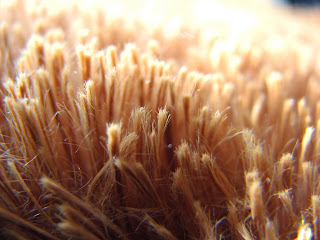Wednesday, February 23, 2011
Tuesday, February 22, 2011
Friday, February 18, 2011
Wednesday, February 16, 2011
Tuesday, February 15, 2011
Wednesday, February 9, 2011
Aperture: (using Aperture Priority mode) The aperture is simply the diameter of the lens of the camera being used. The selected aperture determines how much light will pass through the lens and make contact with the film; the retina controls this. On many cameras used specifically for photography rather than point-and-shoot cameras, the aperture is determined through f-stops. These f-stops are numbers (ie. 2.8) that express the diameter (aperture) of the lens. The smaller this number is, the larger the opening of the lens.
Apertures can be shown in many ways. For instance:
Maximum Aperture
Ie. F2.8
Aperture Range
Ie. F2.8 – F8
The aperture range shows the minimum aperture as well as the maximum, while also assuming there are standard increments (f-stops) between them. Between the maximum and minimum aperture are 5 f-stops.
(ie. If the maximum were F1.8 and the minimum were F16, the in-between increments would be as follows: F2.8, F4, F5.6, F8, and F11).
**If your aperture is currently set at F5.6, closing it by 1f-stop would put the aperture at f8, and opening it by 1f would put the aperture at f4.**
**A “good” aperture range is usually between F1.8 and F16**
Shutter Speed: (using Shutter Speed Priority mode) The shutter speed is literally the amount of time the shutter itself is open. In digital photography, it is the length of time that the image sensor on the camera “sees” the scene the photographer is attempting to capture.
It is measure, mostly, in fractions of seconds, sometimes in plain seconds. The larger the denominator, the bottom number on the fraction [ie. 1/30 (30 is the denominator)], the faster the shutter speed is. (ie. 1/1000 is much faster than 1/30).
Usually the shutter speeds double in speed, making it easier for the photographer to determine which to use (ie. 1/8, 1/15, 1/30, 1/60, 1/125, 1/250, 1/500).
**Increasing shutter speed by one f-stop and decreasing aperture by one f-stop should give the photographer similar exposure (amount of light taken in) levels.
In most cases, a digital photographer will usually be using shutter speeds of 1/60 or greater.
This photo appeals to me because the macro setting has been applied, bringing out a higher quality in the railroad track itself. The glass ball, or “the thing”, also brings an interesting touch to the picture; not only does it reflect the scene, but it seems to show the rest of the picture (leaves, ground, trees, sky) in a higher quality.
I located this photo on Flickr (http://www.flickr.com/photos/axel_diederich/5401144238/).
I would like to recreate this effect because not only do I enjoy experimenting with the macro setting, I also would like to know how this “thing” was formed and how the rest of the scene was incorporated into “the thing” itself.
This photo appeals to me because its definitely abnormal and out of the ordinary. It looks like an infected person from a horror movie (ie. 28 Days Later and 28 Weeks Later). I located this photo at Flickr
I would like to recreate this effect because it is very intriguing and it catches my eye beyond belief (no pun intended).
This photo appeals to me because the color purple usually isn’t a color that appeals to me, but for some reason the different shades of purple in this photo do. The scene in the reflection of the sunglasses also seems very realistic because the subject’s nose can also be seen in the reflection. I located this picture at Flickr
I would like to recreate this effect because the different effects one can do with reflections in sunglasses, mirrors (cars especially), and glass are really cool to look at, and some of them even look pretty realistic.
Subscribe to:
Comments (Atom)





















